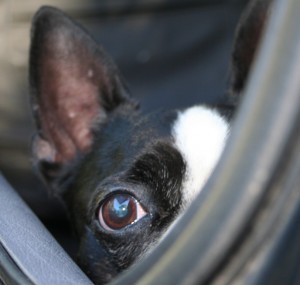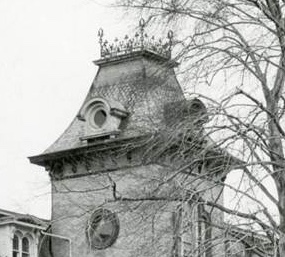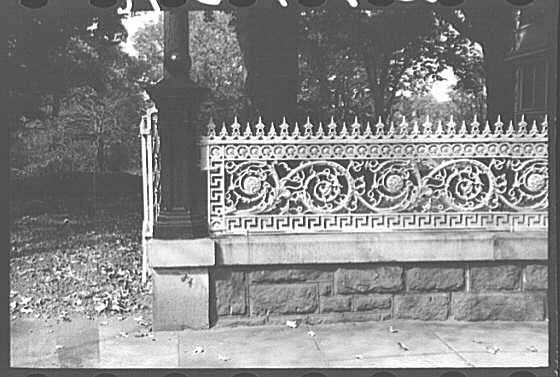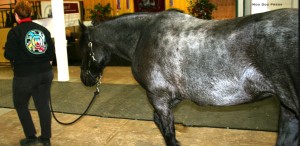COVID-19 Era Pages: Hold On, Let’s Go
“Knowing is not enough; we must apply. Wishing is not enough; we must do.” – Johann Wolfgang Von Goethe
Let go. Hold on. Human beings like to move around from one place to another. But not this year. Stay put. Listen to science, those on the front lines as a pandemic flares and gulps health like a fire racing through dry timber. Wear a mask; wear two. Keep your distance; work remote. Wash your hands. No gathering for Thanksgiving. No.
— NurseKelsey (@nursekelsey) November 13, 2020
Build a life raft and hang on. First, a few notable recent events accessible to view from where you are.
The Bruce Museum hosted a remote live (remote) with Luc Hardy on Nov. 17; an interview with Hardy is linked here via France-Amérique from April 23, 2020 by Clément Thiery. “Breton-born Luc Hardy is an entrepreneur, environmentalist, documentary filmmaker, and photographer. To date, he has walked nearly 125 miles to the North Pole, climbed the highest mountain in Antarctica, and used a bathyscaphe — a self-propelled submersible — to explore the seabed off the island of Klein Curaçao in the Caribbean. Confined at his home in Greenwich, Connecticut, he looks back on these extraordinary adventures.
Being watched on my way to #Kilimanjaro’s summit….#chameleon #wildlife #WildlifeConservation pic.twitter.com/uXZBrcIOxm
— Luc Hardy (@luchardy) September 2, 2020
France-Amérique: How has the Covid-19 pandemic affected you?
Luc Hardy: I haven’t spent more than two weeks at home for the last 15 years! I was supposed to be part of an expedition in March with a diver and coral expert from the Smithsonian Institution in Washington D.C. to prepare a documentary about Panama. The country is the size of Ireland but has more biodiversity than the United States. I had then planned to sail from Trinidad and Tobago to Guyana to investigate sargassum, a genus of brown, toxic algae that have invaded beaches in the Caribbean, the Gulf of Mexico, and Africa. They pose a real public health risk. This project has been postponed until July, but my trip to Greenland in August will go ahead as planned. The American explorer Justin Fornal and I are preparing a swim from the village of Qaanaaq to the Nunavut territory in Canada to raise awareness about the melting icecaps.”
Another program and a different sort of exploration, time travel.
The Wilcox Mansion once stood on Broad Street, Meriden, Connecticut. The ornate fence (visible in an image of Meriden Historical Society) is now in Virginia, the journey of that fence told via The Danville Experience. An excerpt:
“Even the fence was disassembled and sold. It was one of the things that Gladys purchased; something to hold on to, a memory of the house.”
Details and photos (2012) linked here.
“The grand parlor still stands in the Metropolitan Museum of Art. It is their Renaissance Revival Room, a testament to the way successful Americans lived in the 1870s.”
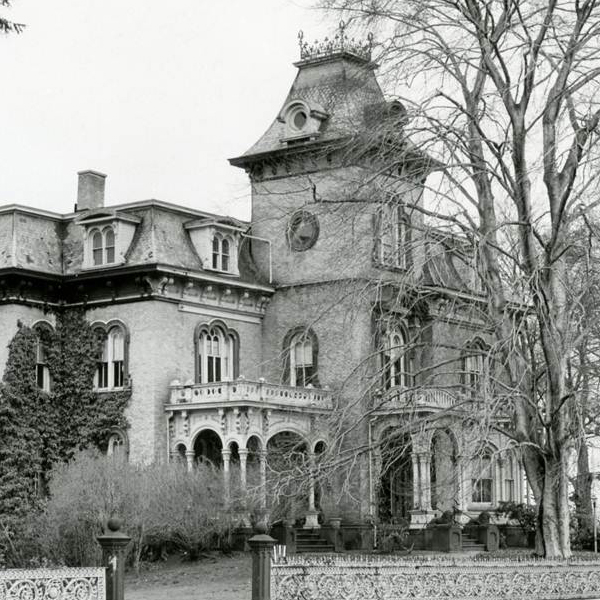
The Wilcox Mansion side view; image is courtesy of Meriden Historical Society and is linked to the event page via FB.
Imagine the views west toward the Hanging Hills of Meriden from inside the highest point of this architectural masterwork. Today, the same site still has showed evidence of the once-magnificent beeches. (Link goes to approximate location on Broad Street; toggle back in time via Google Maps to see the beech tree with foliage and then, just a stub in 2016.)
The completion of this place 150 years ago to the day — was celebrated in a virtual program by local historian Brian Cofrancesco with images and narration of his years of research about Jedediah Wilcox and history (sadly, the structure has been demolished but take heart that a room is preserved at The Met and the ornate fence stands in Virginia at another incredible place). Update: A video recording of this Nov. 19, 2020 program will be available soon via the Meriden Historical Society FB page and YouTube. Co-presented by Meriden Historical Society and Meriden Public Library.
Now just imagine a projected image on site and perhaps the ability to view online and explore rooms (if that data exists). Photographs can re-create a place in three dimensions, such potential. From AliceVision: “Photogrammetry is the science of making measurements from photographs. It infers the geometry of a scene from a set of unordered photographies or videos. Photography is the projection of a 3D scene onto a 2D plane, losing depth information. The goal of photogrammetry is to reverse this process.”
The dense modeling of the scene is the result yielded by chaining two computer vision-based pipelines:
“Structure-from-Motion” (SfM) and “Multi View Stereo” (MVS).
.
So creative! Using Photoshop in Real Life though
#Photoshop #Creative #design #Photo #Photography
Credit: Hamid Ebrahimnia#Illustration #Creativity #designer #Graphics #Art #Artist#Blockchain: @sanemavcil @sanemrocks @ohmagency
— Sanem Avcil
ICO Advisor (@Sanemavcil) July 8, 2019
#photography is the projection of a 3D scene onto a 2D plane, losing depth information. The goal of #photogrammetry is to reverse this process.
3 new illustrations are online:
https://t.co/yim20ngSaD@AliceVision_Org #cinema #entomology #archeology #meshroom #illustration pic.twitter.com/RDxVgVtqco
— Juliette Taka (@JulietteTaka) October 3, 2020
Travel, even local walks and rides will educate (keep your distance from others and keep that mask on). Notable people/accounts on Twitter (think of the platform as a living library crossed with natural history collections, explorers, commentary, news ticker and showcase — if you choose excellence and can think critically, (block abusive ignorance) it can educate on interconnectivity of all life on one planet. Every day is something new to learn, read, wonder at. Join in to help and support from where you are, connect, communicate. More will be shared in days to come as collections, voices, videos are a vital window to the world as winter approaches. Here is a link to a page that showcases accounts that are windows on the world.
For more resources for learning and (remote) explorations, visit our Resources page.
Note: This story was updated and edited Nov. 17 and again on Nov. 19. To be continued, about a map and fountain and the demise of a Charles Parker piano stool that led to connecting story shards.


